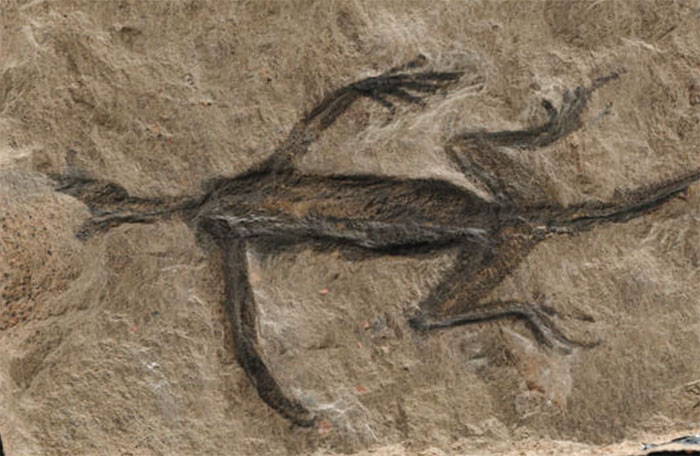Archaeologists have discovered the truth behind the mystery that has long surrounded a 280 million-year-old reptile fossil: it is fake .
The results of fossil analysis of the reptile scientifically named Tridentinosaurus antiquus show that what was thought to be ancient and well-preserved soft tissue turned out to be just black paint, according to a report published in the journal Palaeontology. .
The fossil of the lizard-like animal, about 20 centimeters long, was found in the Italian Alps in 1931 and has since been considered an important discovery that could help understand how crawling close to evolution.
 The fossil was discovered in 1931. (Photo: PALAEONTOLOGY).
The fossil was discovered in 1931. (Photo: PALAEONTOLOGY).
With the specimen’s body outline being black compared to the surrounding rock, the fossil has long been thought by researchers to be well preserved thanks to a fossilization process called carbonization. This is a process that often occurs in plants but rarely occurs in animals.
This causes scientists to classify Tridentinosaurus antiquus in a group called Protorosauria. The skin is believed to be a fossil, attracting a lot of attention from researchers.
However, many paleontologists still cannot provide an explanation for the strange features of the fossil.
Now, a team of researchers in Ireland and Italy have analyzed the fossil using UV imaging, revealing the material covering the specimen.
Microscopic analysis results revealed that the border surrounding the body of Tridentinosaurus antiquus was created with an artificial black paint, not animal soft tissue.
Based on the new report, the research team urges paleontologists to be cautious in using fossils for future research projects.





